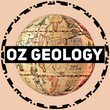Baw Baw Goldfields Prospecting Maps – Trace the Hidden Riches of Victoria’s Alpine Goldbelt
Step into the alpine heart of Victoria’s gold rush history with the Baw Baw Goldfields, a high-country treasure trove nestled within the Great Dividing Range. The detailed gold prospecting map of the Baw Baw region unveils a network of historic diggings, quartz reefs, and auriferous creeks that once fueled a flurry of gold fever across this rugged frontier. There is also a few pages worth reading before taking a look at the historic map, so be sure to do that if it piques your interest.
🏞️ Historical Overview: Gold in the Baw Baw Ranges
Gold was first discovered in the Baw Baw Ranges in the 1860s, following the success of nearby fields like Walhalla, Tanjil, and Jordan. Early explorers and prospectors quickly realized the region's gold-bearing potential, especially around tributaries of the Tanjil River, Russell’s Creek, Easton’s Creek, and Pheasant Creek.
The area became known for its scattered but rich alluvial patches, auriferous quartz reefs, and later, hydraulic sluicing on high creeks and leads. Although no single major rush defined the Baw Baw Goldfields, its gold was coarse, nuggety, and often found in untouched alpine gullies.
Key periods of activity:
1864–1870: Initial rushes to Tanjil and Baw Baw diggings
1872–1880: Reef mining and sluicing attempts
1890s–1930s: Revival of reef claims and small-scale prospecting
✨ Notable Finds & Features
Gold nuggets up to 5 ounces were reported from creeks such as Russell’s Creek and Pheasant Creek.
Auriferous quartz veins hosted in granite and altered metasediments, often near fault zones and intrusive contacts.
Multiple old gold workings, including hand-stacked tailings, collapsed shafts, and water races.
In 1895, reef assays from the Baw Baw Plateau returned up to 1 oz per ton, sparking interest in deeper exploration.
🥾 Ideal For:
Detectorists searching for coarse alpine gold near old workings
Alluvial fossickers exploring remote creeks and river flats
Adventurers seeking gold in untouched wilderness
History buffs researching Victoria’s forgotten alpine goldfields
⚠️ Access Tips:
Much of the Baw Baw Goldfields region lies in State Forest and alpine public land, where fossicking is permitted with a Miner’s Right. However, areas inside Baw Baw National Park and Bunyip State Park are off-limits, so consult your map for legal access zones. Many productive areas exist just outside these boundaries.
Dig Into the High Country’s Golden Past – Whether you're a modern-day prospector or an armchair historian, the Baw Baw Goldfields prospecting map will open the door to one of Victoria’s most scenic and underexplored gold regions. Discover old-time diggings, untouched quartz veins, and creeks still whispering with the promise of gold.
Map & Guide to the Mount Baw Baw Gold Fields 1862
https://viewer.slv.vic.gov.au/?entity=IE4614907&file=FL17064404&mode=browse
